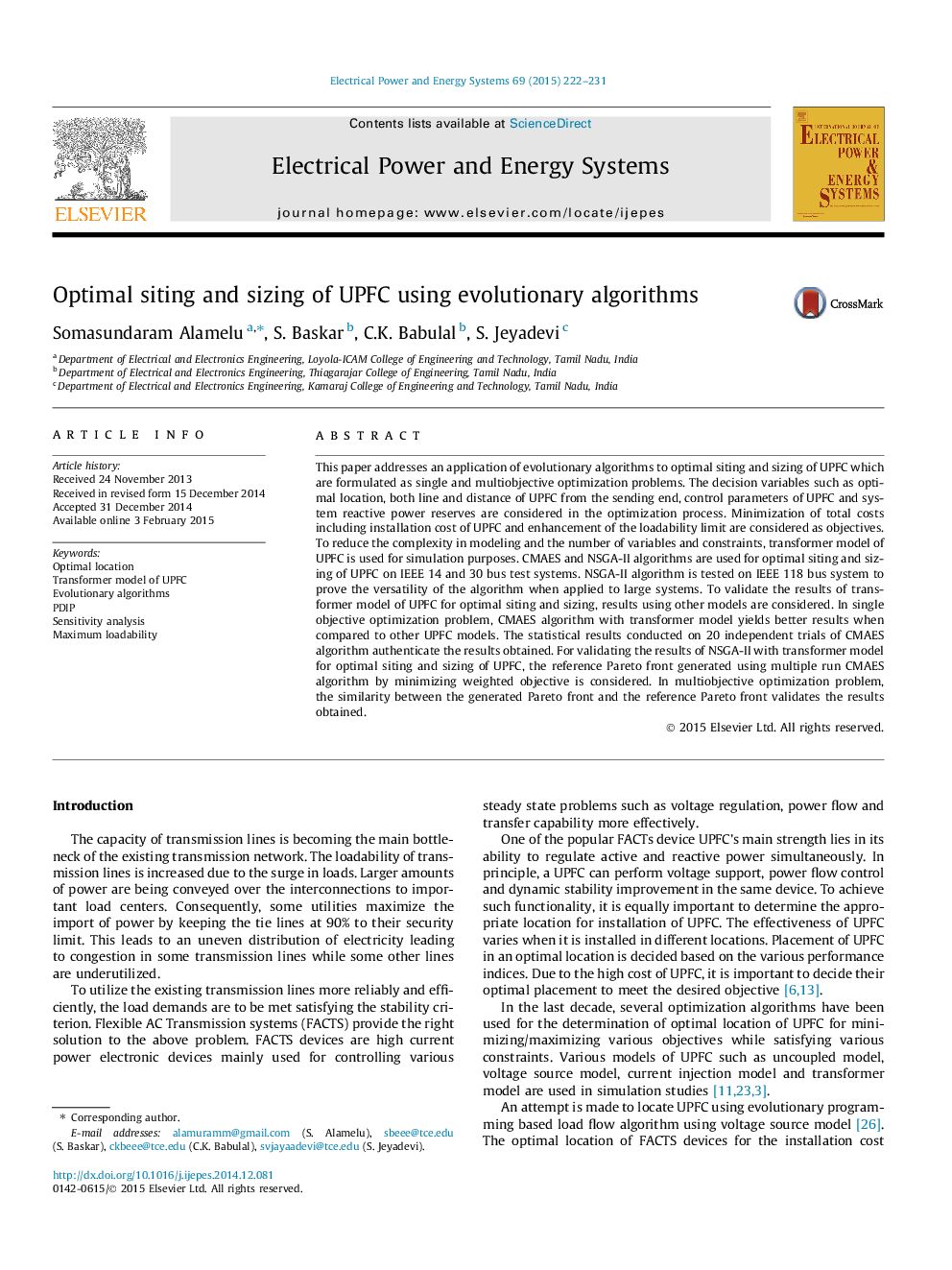| Article ID | Journal | Published Year | Pages | File Type |
|---|---|---|---|---|
| 399528 | International Journal of Electrical Power & Energy Systems | 2015 | 10 Pages |
•Optimal siting and sizing of UPFC is proposed.•Co-variance matrix adapted evolution strategy is employed.•Transformer model of UPFC is used.•Minimized installation cost of UPFC and enhancement of loadability limit are considered as objectives.•Multiobjective optimization is done using NSGA-II algorithm.
This paper addresses an application of evolutionary algorithms to optimal siting and sizing of UPFC which are formulated as single and multiobjective optimization problems. The decision variables such as optimal location, both line and distance of UPFC from the sending end, control parameters of UPFC and system reactive power reserves are considered in the optimization process. Minimization of total costs including installation cost of UPFC and enhancement of the loadability limit are considered as objectives. To reduce the complexity in modeling and the number of variables and constraints, transformer model of UPFC is used for simulation purposes. CMAES and NSGA-II algorithms are used for optimal siting and sizing of UPFC on IEEE 14 and 30 bus test systems. NSGA-II algorithm is tested on IEEE 118 bus system to prove the versatility of the algorithm when applied to large systems. To validate the results of transformer model of UPFC for optimal siting and sizing, results using other models are considered. In single objective optimization problem, CMAES algorithm with transformer model yields better results when compared to other UPFC models. The statistical results conducted on 20 independent trials of CMAES algorithm authenticate the results obtained. For validating the results of NSGA-II with transformer model for optimal siting and sizing of UPFC, the reference Pareto front generated using multiple run CMAES algorithm by minimizing weighted objective is considered. In multiobjective optimization problem, the similarity between the generated Pareto front and the reference Pareto front validates the results obtained.
